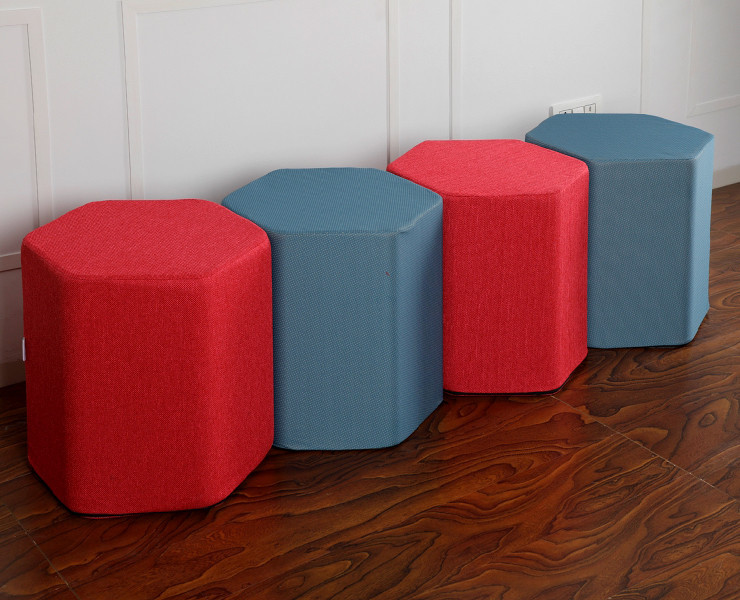views
Introduction
Augmented Reality (AR) has evolved as a potent tool with the ability to change how we interact with the environment around us in the always-changing technological landscape. With a variety of applications that go well beyond gaming and entertainment, augmented reality (AR) blends digital data and virtual components into our actual world. The utilization of AR in the form of AR plates is one such application that has drawn a lot of attention. These plates, also referred to as "AR plates," are used in a growing number of real-world settings and have the potential to change a number of different industries. We will examine the fascinating real-world uses for AR plates in this blog and how they are already having a big influence.
Understanding AR Plates
Let's first define AR Plate before moving on to the applications. Augmented Reality plates, also known as Mixed Reality markers or codes, are real-world objects that can be detected and followed by AR-enabled gadgets like mobile phones, tablets, or specialised AR glasses. They frequently take the form of printed patterns. The AR software interprets the data after the device's camera catches these markers and overlays digital material on top of each marker in real time, fusing the physical and digital worlds together seamlessly.
Applications of AR Plates in the Real World
Education and Training
AR plates have advanced significantly in training and education. To create immersive learning environments, they can be included in interactive applications, educational materials, and textbooks. For instance, a history textbook may contain augmented reality (AR) markers that, when read with a mobile device, activate 3D movies, interactive maps, and audio-visual information to bring historical events to life. AR plates aid in the visualization of intricate anatomy in 3D for medical professionals and students, improving comprehension and memory.
Archaeology and Heritage Preservation
AR plates are being used in archaeology and heritage preservation to rebuild historic sites and objects. Visitors can examine 3D renderings and virtual reconstructions of the way these locations would have looked in their heyday by scanning AR markers at historical places. This technology aids in the preservation of cultural assets and increases public access to them.
Engineering and Design
For engineers and designers, AR plates are a game-changer. They enable the interactive modification of intricate designs in 3D. Using AR markers, for instance, architects can view 3D building models in their actual surroundings and make judgments regarding building layout, lighting, and other factors in real-time. Additionally, the automotive sector makes use of AR plates for design validation and prototyping, which enables engineers to assess car models as if they were actually there.
Retail and E-Commerce
Retail has been affected by augmented reality. A lot of businesses employ AR plates to improve the purchasing experience for consumers. Customers may view in-depth product information, put virtual garments on, or see how furniture and home décor goods might look in their homes by scanning AR marks on products or in-store displays. Along with improving customer engagement, this dynamic shopping experience also lowers the frequency of returns.
Tourism and Travel
Through AR plates, travellers and tourists can maximize their journeys. At tourist attractions, visitors can scan signs to obtain educational material, historical information, and even navigational instructions. For instance, an AR sign at a museum can offer thorough descriptions of the artwork, while a marker at the beginning of a hiking path can provide current trail information.
Manufacturing and Maintenance
AR plates are helpful for personnel performing assembly and maintenance work in the manufacturing sector. They can access repair manuals, step-by-step tutorials, and even remote support from professionals as they scan AR markers on machinery or equipment. The chance of errors is decreased while productivity is increased.
Medical Visualization and Training
AR plates have made significant advances in the medical industry. In the operating room, AR markers can be used by surgeons to instantly overlay vital patient data like as MRI images and X-rays onto the operative area. This makes precise procedures possible, lowers risks, and improves patient results.
Entertainment and Art
Even while augmented reality (AR), AR500 Steel Plate has its roots in video games and other forms of entertainment, it is expanding the creative possibilities. In order to create interactive and dynamic shows, artists and producers use AR plates to combine real-world artwork with digital content. Additionally, live performances and concerts use AR to provide audiences with a distinctive and realistic experience, such as digital set design and collaborative performances.
Advertising and Marketing
AR plates have been incredibly useful for marketers in attracting customers and increasing revenue. Businesses utilize augmented reality (AR) markers in print ads, billboards, and packaging for goods to launch interactive content. By scanning these markers, customers can explore a car's features, engage with product demos, or try virtual makeup.
Gaming and Entertainment
Of course, it's important to remember that AR's roots are in entertainment and games. By enabling virtual components to interact with the actual environment, augmented reality (AR) plates play a key part in improving the game experience. The popularity of AR-based escape rooms and games like Pokémon GO has demonstrated the bounds of AR in the gaming industry.
Challenges and Considerations
While there are many intriguing and promising uses for AR plates, there are also several issues that must be resolved before they can be widely used.
- Hardware and Compatibility: The abilities of the hardware that AR plates interact with are quite important. The user experience may be impacted by compatibility problems and differing levels of device performance.
- Privacy and Data Security: The usage of AR plates may require the collection and processing of user data, which raises questions about privacy and data security. To ensure user confidence and data privacy, it is imperative to address these challenges.
- Quality of Content: The usefulness of AR applications is heavily reliant on the content. An unpleasant user experience may result from AR content that is poorly designed or irrelevant.
- Cost and Accessibility: It can be expensive to build and implement AR applications, making it difficult for smaller companies to use the technology. Regardless of socioeconomic level, accessibility for all people should be taken into account.
- Standards and Regulations: As AR plates proliferate, regulatory frameworks and sector standards must be established to guarantee the ethical and responsible usage of AR technology.
Conclusion
The way we interact with the environment has the potential to be completely transformed by augmented reality plates. AR plates are being used in a wide range of real-world applications, from engineering and education to shopping, tourism, and healthcare. In a variety of businesses, they provide better interactions, increased efficiency, and creative solutions. However, as technology advances, issues including equipment compatibility, concerns about confidentiality, and content quality must be addressed. As AR plates become more widely used, it becomes increasingly obvious they are not just a fad but rather a dynamic instrument that has the potential to alter how we perceive the world. In fact, the future has been enhanced.











